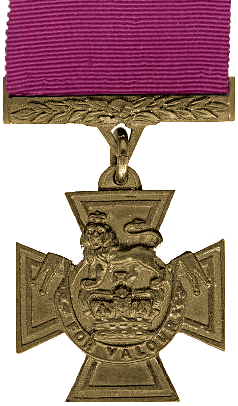Geoffrey Charles Tasker Keyes facts for kids
Quick facts for kids
Geoffrey Charles Tasker Keyes
|
|
|---|---|
 |
|
| Buried |
Benghazi War Cemetery, Libya
|
| Allegiance | |
| Service/ |
|
| Years of service | 1937–1941 † |
| Rank | Lieutenant-Colonel |
| Unit | Royal Scots Greys No. 11 (Scottish) Commando |
| Battles/wars | World War II |
| Awards | Victoria Cross (posthumous) Military Cross Croix de Guerre |
| Relations | Admiral of the Fleet Roger John Brownlow Keyes, 1st Baron Keyes (father) |
Geoffrey Charles Tasker Keyes was a brave Scottish soldier who lived from 1917 to 1941. He was a Lieutenant-Colonel, which is a very high rank in the army. He received the Victoria Cross (VC) and the Military Cross (MC) for his amazing courage. The Victoria Cross is the highest award a soldier can get in the British and Commonwealth forces for showing great bravery in battle. At just 24 years old, he was the youngest Lieutenant-Colonel in the British Army at that time.
Contents
Early Life and Military Beginnings
Geoffrey Keyes was born in Aberdour, Scotland, on May 18, 1917. His father was Admiral of the Fleet Roger John Brownlow Keyes, a very important naval officer. Growing up, Geoffrey was surrounded by military life. He chose to follow in his father's footsteps and joined the army. He trained at the Royal Military College, Sandhurst, which is a famous place where British Army officers are taught.
Joining the Royal Scots Greys
After his training, Geoffrey joined the Royal Scots Greys. This was a well-known cavalry regiment, meaning they originally fought on horseback. By the time Geoffrey joined, they were using tanks and armored vehicles instead of horses. He quickly showed he was a skilled and dedicated officer.
World War II and Special Operations
When World War II began in 1939, Geoffrey Keyes was ready to serve his country. He became part of a special unit called No. 11 (Scottish) Commando. Commandos were elite soldiers trained for dangerous, quick missions behind enemy lines. These missions often involved surprise attacks or gathering important information.
Operation Flipper: A Daring Mission
In November 1941, Geoffrey Keyes led a very risky mission called Operation Flipper. The goal was to attack the headquarters of General Erwin Rommel. Rommel was a famous German general in North Africa, known as the "Desert Fox." His headquarters were in a place called Beda Littoria in Libya. This mission was extremely dangerous because it was deep behind enemy lines.
The Attack on Rommel's Headquarters
On the night of November 17, 1941, Geoffrey Keyes and his small team secretly approached Rommel's headquarters. They planned to sneak in and capture or kill Rommel. Keyes himself led the charge into the building. He showed incredible bravery, fighting his way through guards. During the intense fight, he was sadly killed.
Legacy and Awards
Even though the mission did not capture Rommel, Geoffrey Keyes's actions were seen as incredibly brave. He showed amazing leadership and courage in the face of great danger. For his actions during Operation Flipper, he was awarded the Victoria Cross. This award was given to him after his death, which is called "posthumous." He also received the Military Cross and the Croix de Guerre from France.
Remembering a Hero
Geoffrey Keyes was buried in the Benghazi War Cemetery in Libya. He is remembered as a hero who gave his life for his country. His story is an example of the extreme bravery shown by soldiers during World War II. He was a young man who achieved a high rank and showed extraordinary courage.
Images for kids


